CovSoc memer, John Marshall, reflects on part of the history of WH Smith in Coventry.
THE name WH Smith has been a familiar part of almost every British high street for around 120 years, with a dependable network of branches selling newspapers, books and stationery. But these ubiquitous town centre stores are now a thing of the past.
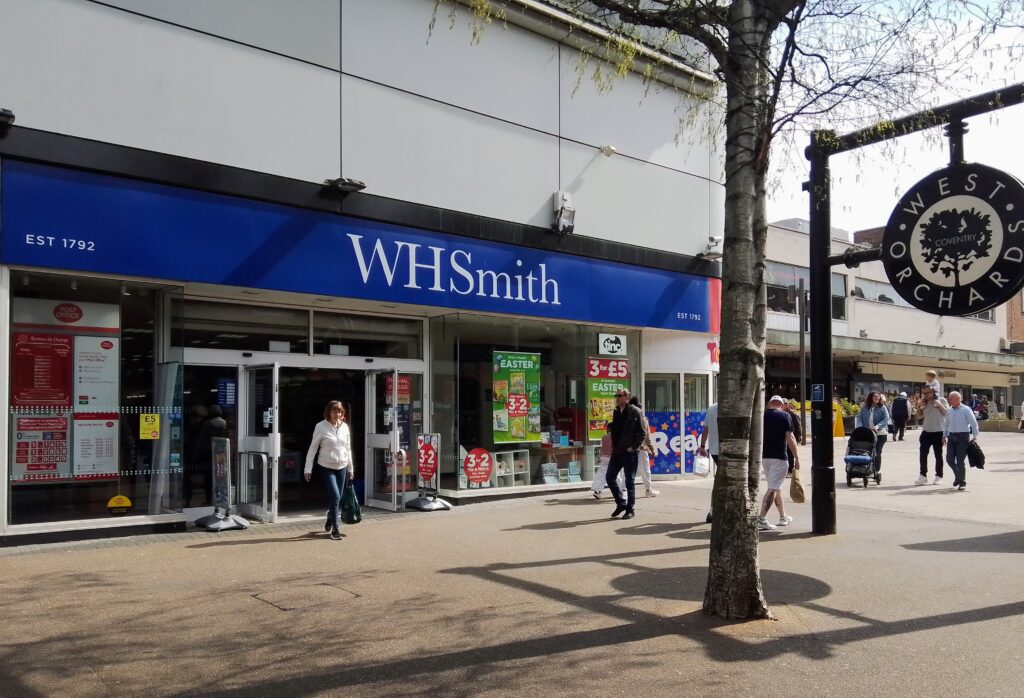
The historic retailer has quit the UK high street and sold its 480 stores to Modella Capital, owner of Hobbycraft, for £76 million. Smith’s said the move will allow it to focus on its travel shops, meaning that WH Smith will retain and extend its presence in railway stations and airports. But the brand will disappear from the high street and Modella has already started to rebrand its newly acquired stores as TG Jones.
The new name does not refer to a real person – it is just a marketing ploy – and the Coventry store in Smithford Way has recently undergone the rebranding.
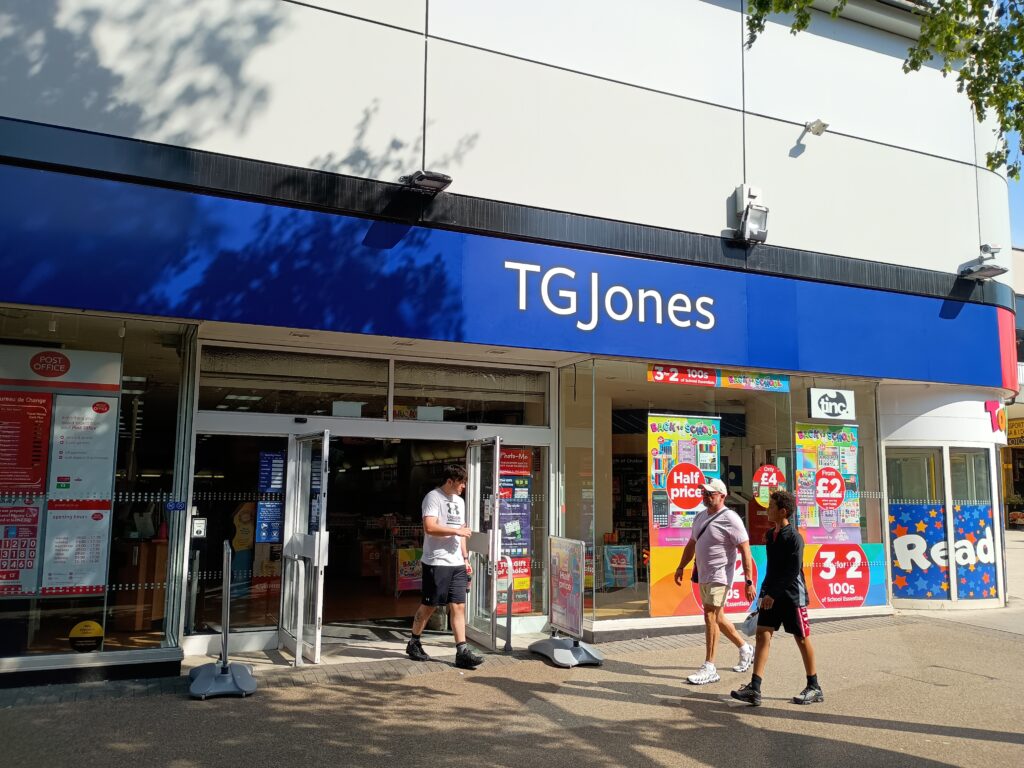
It’s not the first time that Coventry has lost its city centre branch of WH Smith. This time no damage has been done – the shop in Smithford Way is likely to stay exactly the same – but on a previous occasion there was an almighty calamity. That occasion was the Second World War when WH Smith’s, along with many other stores in Coventry, was completely destroyed during the Blitz.
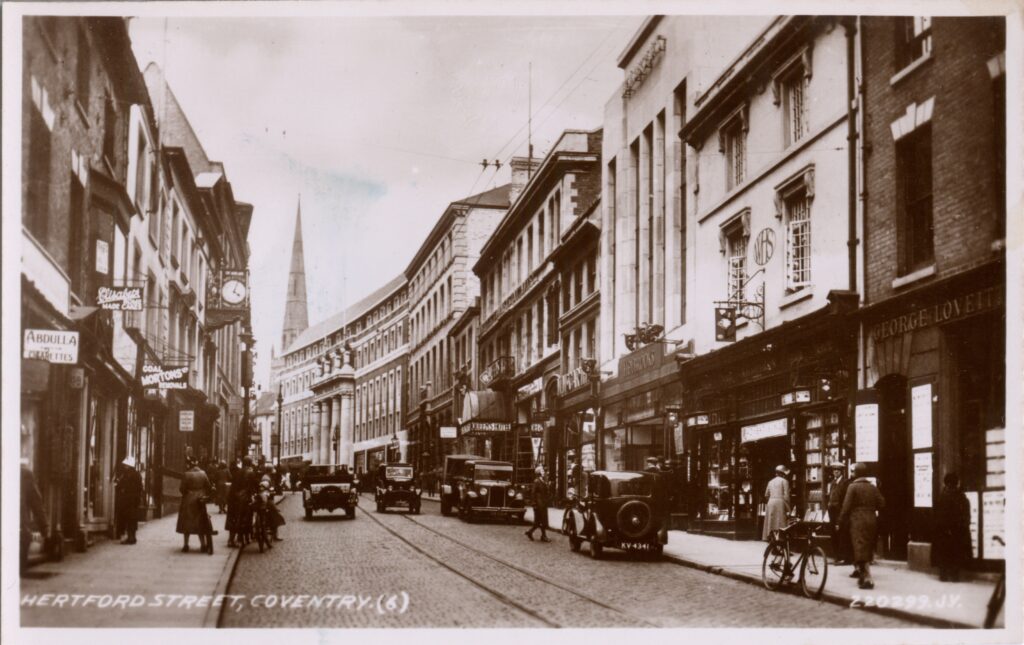
Our photograph above shows the old WH Smith branch in Hertford Street, Coventry, in about 1933. The shop, on the right-hand side, bears the old WHS logo between the windows on the first floor. Next door, only partly visible on the right, is a branch of George Loveitts, the auctioneer and valuer, a company still active in the city today as an estate agent and auctioneer, now with premises at Greyfriars Green. Further up Hertford Street, on the right, is the Queen’s Hotel, with a canopy over the entrance, and beyond that can be seen the imposing structure of the National Provincial Bank, built in 1929-30 and still in existence as NatWest Bank.
Our second photograph (below) shows what happened to WH Smith and other businesses in Hertford Street after the air raids on November 14th 1940. The picture was taken on the day following the Blitz, with firefighters still tackling the blaze at the Queen’s Hotel. The WH Smith shop was almost completely demolished.
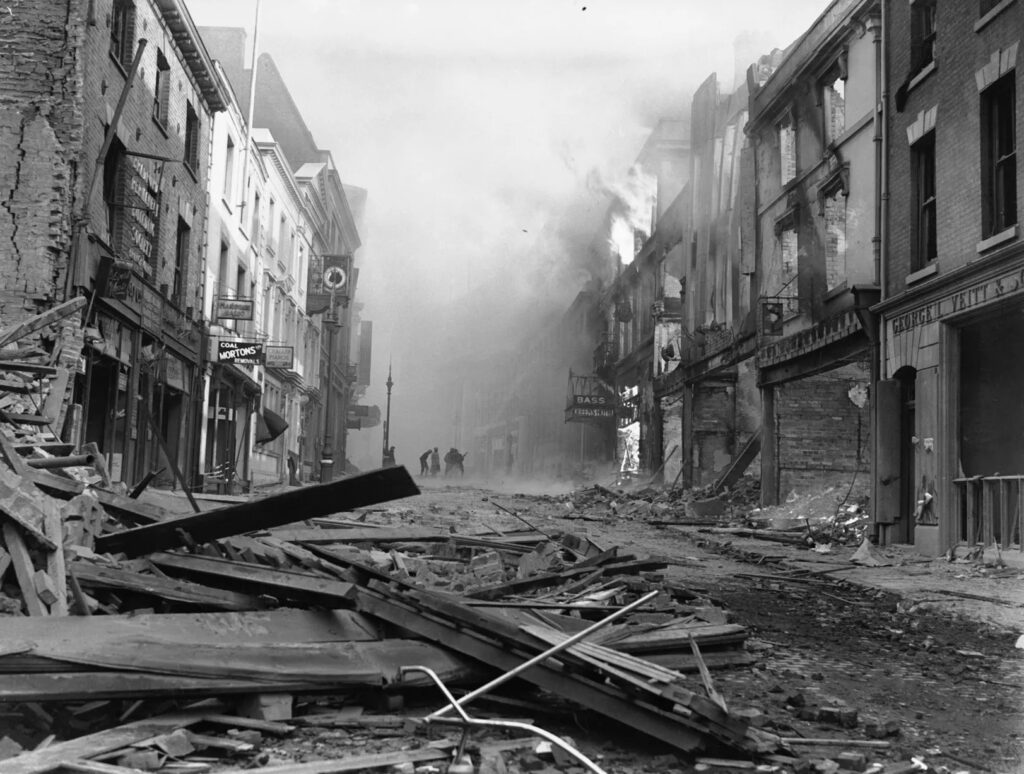
It’s interesting to note that two members of staff who worked at this branch of WH Smith were among those killed in the IRA attack in Broadgate, just over one year earlier. One was Rex Gentle, aged 30, a trainee manager from Wales, and the other a local lad, John Arnott, just 15.
Origins
Nationally, WH Smith can trace its history back to 1792 when Henry Walton Smith and his wife Anna first established a news vendor business in Little Grosvenor Street, Mayfair. After their deaths, the venture was taken over by their youngest son William Henry Smith, the first WH Smith.
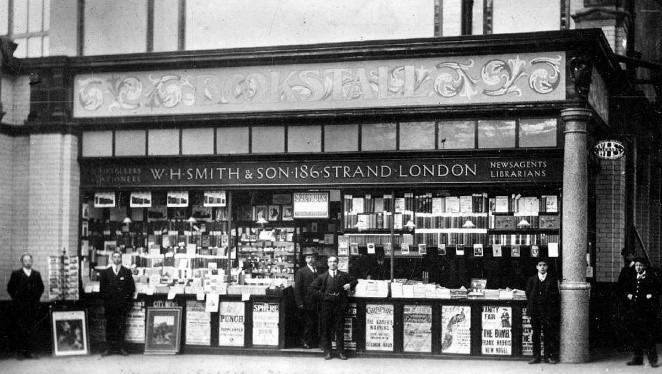
William Henry took full advantage of the railway boom and in 1848 opened the company’s first news stand at Euston Station, later cornering the market at UK railway stations. His son, also named William Henry, became a partner in the business (hence WH Smith & Son) and the firm became a major player in wholesale newspaper distribution, revolutionising the newspaper trade by chartering night trains to deliver papers to the provinces on the same day as publication.
It was only later that the company began to develop its high street retail chain, with the first store opening at Clacton-on-Sea in 1901. By 1933 the firm had 311 high street shops, 1,400 bookstalls and 48 wholesale outlets.
□ This article first appeared in the September 2025 issue of Jabet’s Ash, the newsletter of Stoke Local History Group
